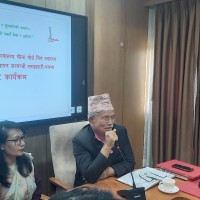Primary Schools Shut in New Delhi as Smog Crisis Reaches Hazardous Levels
As of Thursday night, all primary schools in Delhi were ordered closed, with students moved to online classes due to the severe air pollution.

Residents of New Delhi woke up Friday morning under a suffocating layer of smog, as air quality plummeted to hazardous levels for the fourth day in a row. The intensifying pollution crisis has led city authorities to shut down primary schools and implement emergency restrictions to protect residents from the annual health threat.
As of Thursday night, all primary schools in Delhi were ordered closed, with students moved to online classes due to the severe air pollution. Parents, already concerned for their children’s health, welcomed the move. “My eight-year-old has had a persistent cough this week,” said local resident Satraj. “Closing schools was the right choice to protect our kids.”
Delhi’s air quality index has reached critically dangerous levels, with PM2.5 concentrations recorded at more than 26 times the World Health Organization's recommended limit. PM2.5 particles, so fine they can enter the bloodstream through the lungs, are linked to serious health issues, including respiratory illness, cardiovascular problems, and cancer.
In addition to school closures, authorities have implemented measures to reduce air pollution: banning construction work, halting older diesel vehicles, and deploying water trucks to clear dust from major roads. Despite these efforts, monitoring group IQAir reported “hazardous” air quality on Friday morning, with little improvement in sight.
Critics argue that these emergency steps are insufficient. “We’re dealing with this crisis every year, yet the response hasn’t matched the urgency of the situation,” said Sunil Dahiya from the advocacy group Envirocatalysts. Environmental experts have long called for systemic, long-term changes, such as cleaner transportation, waste management reforms, and cleaner energy sources to address the city’s pollution levels.
The smog crisis worsens each winter due to a combination of stubble burning by farmers in nearby Punjab and Haryana states, vehicle emissions, industrial pollution, and household waste burning. Cooler temperatures and stagnant wind patterns exacerbate the problem, trapping pollutants over the city for weeks at a time.
As of Friday, NDTV reported over 7,000 farm fires in Punjab, while numerous coal plants and industrial facilities around Delhi continue to contribute to the toxic haze. According to a study published in The Lancet, air pollution led to 1.67 million premature deaths in India in 2019 alone, underscoring the need for urgent, comprehensive action to mitigate the health risks facing the nation’s most populous regions.
















तपाईको प्रतिक्रिया दिनुहोस